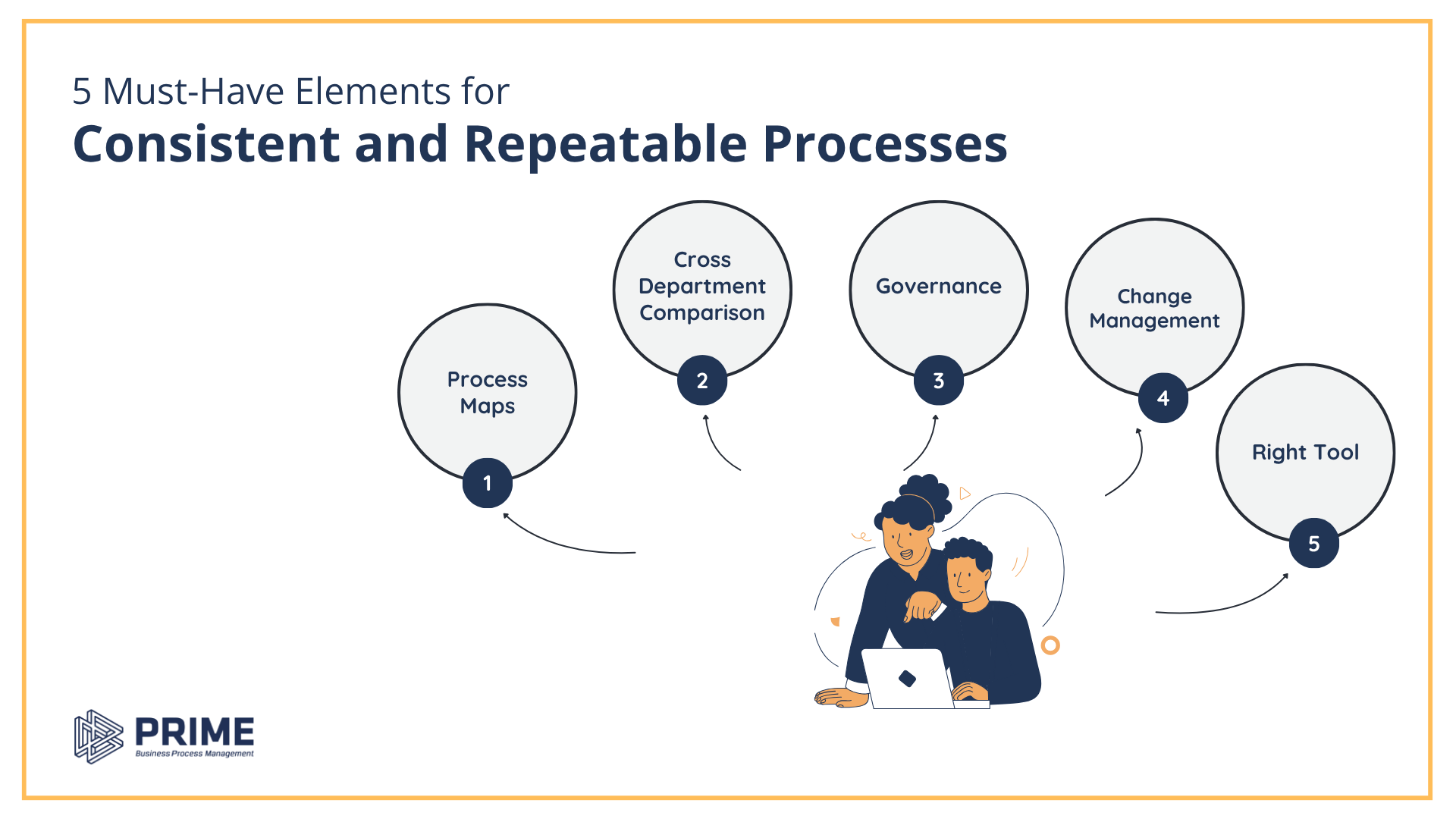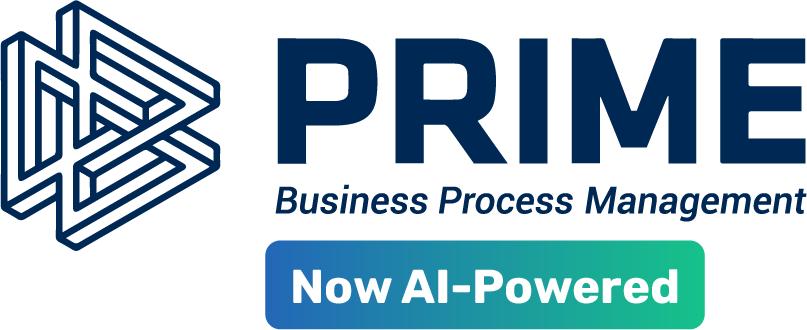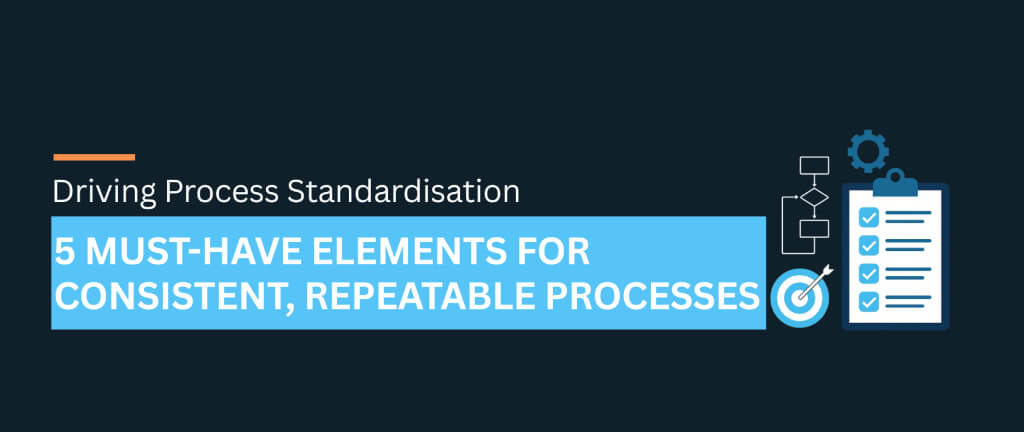TABLE OF CONTENTS
5 Must-Have Elements for Consistent and Repeatable Processes
You’ve refined your product, hired a skilled team, and are ready to expand. Whether it’s onboarding new staff, opening a second office, or launching a new service line, you’re moving full steam ahead—until chaos strikes.
Suddenly, employees aren’t on the same page. Tasks are duplicated or missed. Customer complaints start trickling in. What once worked smoothly at a smaller scale now struggles to keep up. The culprit? Lack of standardisation.
Scaling a business is about increasing business, along with replicating success without compromising quality. And to do that, you need structured, repeatable processes that don’t fall apart as your operations grow.
This blog explores why standardisation is crucial for scalability and outlines the five essential elements you need to embed into your processes to ensure consistency, repeatability, and long-term success.
How Standardisation Becomes Your Growth Multiplier
Standardisation is the practice of defining, documenting, and applying the best-known method of performing a task consistently across an organisation. Far from being a restrictive force, standardisation unlocks extraordinary benefits:
Accelerate Execution
When everyone follows the same process, you eliminate confusion, reduce rework, and speed up delivery. Employees don’t have to guess what to do next or re-create templates and workflows from scratch.
Imagine a procurement process where approvals, documentation, and budget checks are clearly laid out. Instead of wasting time clarifying expectations, teams can move swiftly from initiation to completion.
Control Costs
Variation in processes often hides duplicative work, redundant approvals, and inefficient tools. By standardising workflows, you make costs transparent and predictable.
Ensure Consistency
When processes differ from one team or location to another, output quality becomes unpredictable. Customers may encounter vastly different levels of service depending on who handles their request, eroding trust and weakening your brand reputation over time.
Standardisation eliminates this inconsistency by creating clear, repeatable workflows that ensure every interaction meets the same high standard.
Consider the example of a bank: If each branch delivers services in its own way—some following rigorous checks, others relying on informal practices—customers will have conflicting experiences. One branch might resolve an issue swiftly, while another requires repeated follow-ups.
Such disparity not only frustrates customers but also signals that your organisation lacks professionalism and control. By standardising core processes, you deliver uniform, reliable experiences that build lasting confidence among clients and stakeholders, no matter where or how they engage with your business.
Simplify Training
Clear, documented processes shorten the learning curve for new employees. Instead of relying on informal handovers or tribal knowledge, staff can access a single source of truth to understand their responsibilities.
This makes scaling teams easier, especially as your business grows across locations and markets.
Fuel Better Decisions
Data is only meaningful when it’s comparable. When teams execute the same process differently, measuring and improving performance becomes almost impossible.
Standardisation provides a solid foundation for data-driven decision-making, continuous improvement, and innovation.
With clear processes and defined responsibilities, teams don’t waste time figuring out what to do. Decisions are made faster, and actions follow a predictable path.
What Happens When Your Processes Aren’t Standardised
Organisations that scale without standardisation quickly hit roadblocks. Here’s what unfolds when structure is missing:
- Inconsistency Becomes the Norm: One team follows an outdated template. Another creates its own. The result? Mismatched deliverables and confused customers.
- Inefficiencies Multiply: Without clarity, employees waste time chasing approvals, redoing tasks, or waiting for information.
- Compliance Gaps: In industries where regulatory compliance matters, inconsistent processes introduce risk. Missing steps, incomplete documentation, and informal approvals can trigger audit failures and reputational damage. Standardisation is the simplest way to ensure compliance is built into everyday operations.
- Knowledge Management: When processes are not standardised, critical knowledge often sits with just one or two individuals. This creates a fragile environment where business continuity depends on their availability. If those employees go on leave, change roles, or exit the organisation, essential activities stall and service quality drops.
Standardisation removes this risk by capturing, documenting, and sharing the way work is performed. Everyone can access the same clear instructions, approvals, and templates, ensuring tasks are carried out consistently, regardless of who is executing them.
This approach also supports smoother handovers, faster onboarding, and easier task redistribution when teams grow or restructure.
5 Must-Have Elements for Consistent and Repeatable Processes

To scale with confidence, organisations must shift from inconsistent, ad-hoc execution to structured, repeatable processes. Effective process standardisation requires the right framework, the right mindset, and the right tools. Below are the five core elements that form the foundation of successful standardisation across any organisation.
1. Comprehensive Documentation – Establish a Single Source of Truth
The first step to standardisation is gaining complete visibility into how processes are currently performed. Comprehensive process documentation provides clarity on every task, role, system, and document involved in executing a process.
Mapped once, processes become a single source of operational truth, eliminating confusion and enabling consistency.
2. Cross-Departmental Process Comparison
In most organisations, the same core process can look completely different across departments or regions, creating hidden inefficiencies and unpredictable results.
By conducting structured comparisons between process variations—such as how finance and marketing handle procurement—you can pinpoint precisely where certain teams achieve faster, more cost-effective outcomes. These insights reveal proven practices that are helping one department consistently meet its goals.
Armed with clear, data-backed analysis, you can confidently identify the most efficient process variant and roll it out as the standard across your organisation, ensuring everyone benefits from the best approach.
3. Governance for Compliance and Organisational Consistency
Inconsistent processes impact efficiency and can pose a serious compliance risk. Standardisation supports governance by ensuring that processes align with internal policies and meet external regulatory requirements.
Once an optimised process is defined, it should be rolled out organisation-wide, ensuring all departments adhere to the same procedures. This also maintains a full audit trail, version control, and easy access to process documentation, strengthening accountability and process transparency.
4. Change Management – Drive Adoption Across Teams
Even the most optimised process fails if teams don’t adopt it. Change management is a vital element of successful standardisation, ensuring employees understand, adopt, and consistently apply the standardised process.
Integrate training modules, role-based access, and collaborative feedback features in your organisation. As you roll out new processes, teams are guided through changes with built-in support and contextual resources, reducing resistance and enabling a smoother transition.
5. The Right Tool to Ease the Procedure
Process standardisation can be complex, but the right tool makes it easy. Choose a purpose-built tool like PRIME BPM to streamline the entire standardisation journey—from mapping and analysing to comparing, optimising, and deploying processes at scale.
With features like rapid process modelling, side-by-side comparisons, one-click process cloning, and integrated analytics, PRIME BPM empowers organisations to reduce variation, increase consistency, and accelerate improvement.
Build Scalable Systems, Not One-Time Solutions
Scalability is about creating a repeatable, efficient system that works seamlessly across your organisation. Without standardisation, every new initiative introduces complexity, inconsistency, and risk. But with the right tool, you can transform chaos into clarity.
That’s where PRIME BPM becomes your strategic partner. It is a comprehensive, end-to-end BPM software that helps organisations effortlessly standardise business processes, ensuring a seamless and consistent experience for customers. PRIME BPM empowers you to eliminate inefficiencies and duplication, and identify and scale the most effective processes
Don’t let fragmented processes hold back your growth. Standardise, optimise, and scale smarter—with PRIME BPM.
Start your journey today with a 15-day free trial or book a demo to see how PRIME BPM can help you create consistent, high-performance processes across your organisation.








